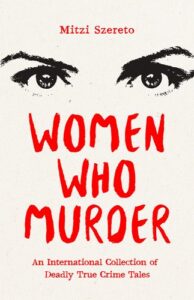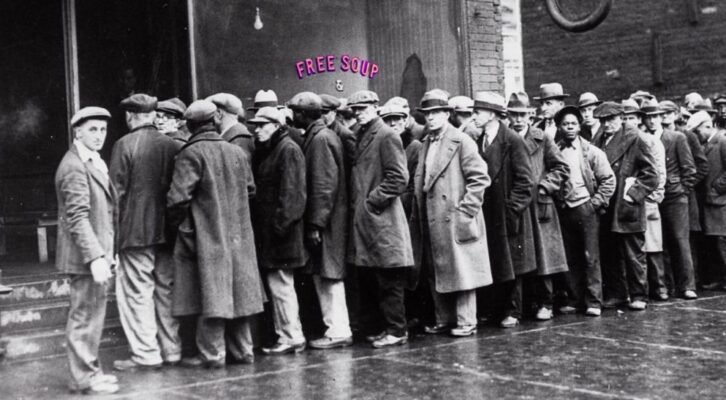“They had gold and my baby was sick.”
—Mahin Qadiri
About ninety-five miles northwest of the Iranian capital Tehran is the city of Qazvin. Located on the foothills of the Alborz Mountains, it has a population of more than four hundred thousand people. It’s a place rich in cultural and historical significance. It’s also a place where people are turning up dead.
A man is murdered in 2006.
Between February and May 2009, five women are murdered.
The method used in the killings is similar, as is the method by which the bodies are disposed of. Each of the victims has been strangled and, apart from the first victim, all of them are women. Specifically, older women.
Is there a serial killer on the loose in Qazvin?
***
Iran isn’t the first place you think of when it comes to serial killers. Yet in the twenty-first century alone, there have been several. In the early 2000s, Saeed Hanaei (the “Spider Killer”) targeted female sex workers in Mashhad, claiming he was cleansing the city of “moral corruption”; his known victim tally was sixteen. Mohammed Bijeh (the “Tehran Desert Vampire”) was convicted of raping and murdering at least sixteen young boys, ages eight to fifteen, in 2004, and at least two adults, with some accounts listing the victim count in excess of forty. Farid Baghlani (the “Cyclist Killer”), a self-proclaimed woman hater, killed at least fifteen women and girls and one boy between 2004 and 2008 in Abadan and Khorramshahr. Omid Barak (the “Highway Killer”), targeted women who “cheated,” murdering at least ten women between 2006 and 2008 in the Karaj area.
As one might expect, all these serial killers were men.
Catching a Serial Killer
When the body of an older male is found beneath a bridge in Qazvin, there’s nothing to indicate it’s the work of a serial killer. After all, the murder could have been committed for any number of reasons, perhaps a dispute of some kind or illegal dealings that turned violent, maybe even something to do with drugs. Despite the best efforts of police to find the culprit, the case goes cold.
Nearly three years pass before another body turns up, and then another. The randomness of the murders and their frequency raise alarm bells, especially since there’s nothing to suggest that these might be “crimes of passion.” Suddenly residents of the city find themselves on edge as they wonder who among them might be next.
A pattern is emerging. Discounting the earlier murder of the man, the victims are women who range in age from their mid-fifties to early seventies—and they’ve all been strangled, many with their own headscarves, and their jewelry forcibly removed from their bodies. They also appear to have been drugged. These are women who were going about their normal daily business, never to be seen alive again. Are these specifically targeted killings? The fact that the victims are older women does seem to indicate that the killer is seeking a “type.” Perhaps the theft of the jewelry is a bonus rather than a motivating factor.
Police are now faced with the very real possibility that they have a serial killer in their midst.
Prosecutor Mohammad Bagher Olfat assigns a team to the case. Special investigators are also brought in from Tehran. It’s becoming clear from both the evidence they have and the eyewitnesses they’ve interviewed that the victims either knew or trusted their killer. But what happened to the gold jewelry that was removed from the bodies? To sell that much gold, a purchasing invoice would be required. Police get to work, tracking the stolen gold in the markets as well as checking footage from CCTV cameras. Thanks to several eyewitness accounts, as well as a footprint found on the headscarf belonging to one of the victims, investigators are now certain that the killer drives an older-model, light-colored Renault car.
And the killer is female.
As is the case in crimes such as these, people begin to crawl out of the woodwork, all claiming to have important information that will help solve the crimes. Qazvin police receive several tips a day from supposed eyewitnesses, including melodramatic accounts from “victims” who say that they too, were taken by the killer, but had fought back, narrowly escaping death. Having no choice but to follow every lead, police investigate these claims, only to find that they’re bogus. Unfortunately, it’s not uncommon for people to invent stories or provide false evidence to police. It’s often done to gain attention or sympathy, or to frame someone, or even to avoid being suspected of a crime themselves. Not only does this hinder the investigation process, it can lead to wrongful accusations and convictions. It can even lead to a prison sentence for the storyteller. Valuable police time is wasted—time that could have been spent trying to solve a crime instead of chasing down fake leads.
But finally, a credible eyewitness does come forth, and she has a harrowing tale to tell.
A woman in her sixties tells investigators that on April 2, 2009, she escaped from the killer during a visit to the city’s Chahar Anbiya Shrine. A young woman approached her while she was praying and asked if she could join her in prayer. Noticing the woman’s jewelry, the younger draws her into a conversation about which is superior—yellow or white gold. Later, as they’re leaving, the older woman is offered a lift home. She gets into her new friend’s Renault, which is parked nearby on the street. She doesn’t become suspicious until she’s offered a box of juice to drink, which she repeatedly refuses. The driver becomes more and more insistent that she drink it, ignoring her passenger’s repeated pleas to stop and let her out. It’s only when the woman starts banging on the car window that the driver finally stops the car.
The eyewitness works with police to create an E-fit rendering of the Renault driver.
CCTV cameras are installed at the shrine, since investigators believe the perpetrator might try again. When the police captain stops by to check that the cameras are working properly, his car, which he parked nearby, gets ticketed. Suddenly this opens up a whole new line of inquiry. What if the killer’s car was ticketed for parking in the same area? Police reach out to traffic enforcement to see if any Renault cars received a fine on the day in question. They find one. The parking ticket was issued on the same day their eyewitness had accepted a ride home from a young woman driving a Renault.
Coincidentally, the driver of the Renault was questioned about a previous murder—that of a man whose body was found beneath a bridge, though nothing came of it. In a further coincidence, a woman found strangled to death in her home was a relative of the Renault driver, and she was questioned in that case as well, as were other family members and friends of the victim. But again, nothing came of it. When the woman who managed to escape is shown a photograph of the Renault driver, she confirms that it’s the same individual she met at Chahar Anbiya Shrine—the young woman who gave her a ride.
Finally, police have their killer.
Armed police officers, accompanied by female guards, descend on the home of Mahin Qadiri in the Minoodar district of the city. She is arrested, along with her husband.
Now that they have her in custody, investigators find themselves grappling with several questions:
- Is their suspect responsible for all the murders?
- Are there other murders they haven’t yet discovered or traced to her?
- Did she act alone?
At first, Mahin denies everything and refuses to speak for forty-eight hours. Plenty of evidence is put in front of her—evidence that’s difficult to explain away. The yellow powder found in her home is the same anesthetic substance that was used on the victims. One of her shoes matches the footprint found on the headscarf of a victim. Invoices for the sale of gold have been found in her home. An object belonging to one of the victims has been found in her home. Newspaper clippings related to the crimes have been found in her home. And adhesive tape matching the tape used on one of the victims has been found in her car.
There’s also the matter of blood evidence, which is even harder to explain away, though Mahin still gives it her best shot. A forensic examination with a special laser light has uncovered traces of blood on the Renault’s car seat—blood that someone attempted to wash away. Although Mahin acknowledges that it’s blood, she claims that it came from meat she purchased from the butcher. However, the tests indicate that it’s human blood, not animal.
Mahin starts confessing, eventually admitting to five of the murders, though she stops short of admitting to all six. Despite the pile of evidence against her, she denies responsibility for the murder of her relative, her aunt-in-law, who was murdered in her own home. Investigators are certain she did it, but surmise that her denial could be due to concerns over who in the family will look after her two children, one of whom is disabled with cerebral palsy. The victim is the sister of Mahin’s mother-in-law, and her mother-in-law is the only person who made any attempt to help Mahin with her difficulties; therefore, her reluctance to admit guilt for this particular murder is understandable. However, once assurance is obtained that her two daughters will be cared for by her mother-in-law, Mahin confesses to this murder as well.
Because authorities question whether it’s possible for Mahin to have committed all the murders on her own, they suspect she has a partner in crime, her husband being the most likely. They also wonder if a criminal band could be behind the killings and the theft of gold jewelry. Despite Mahin’s insistence that she worked alone, they don’t believe her. They’ve never come across a murder case like this, with a woman as sole perpetrator. Choosing the victims, doing the killing, getting rid of the evidence—could she have done all this by herself?
Investigators decide to do reconstructions of the crime scenes with Mahin to confirm her story—from where she picked up her victims to where she took them and what she did to them. The details add up. Mahin Qadiri is their serial killer.
___________________________________
An excerpt from Women Who Murder: An International Collection of Deadly True Crime Tales. By Mitzi Szereto. Copyright 2024. Published by Mango. Reprinted with permission. All rights resesrved.


















